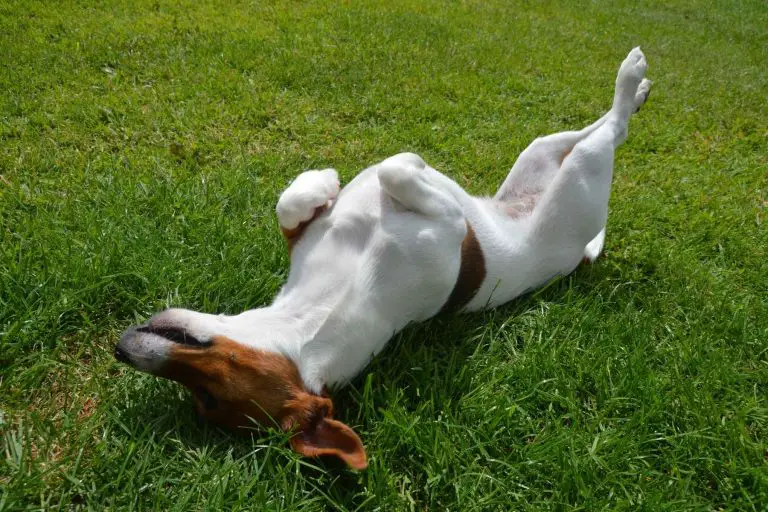Why Do Dogs Hump? Uncovering the Causes and Solutions

Dog owners often encounter a common yet puzzling behavior among their furry companions; the act of humping. For many, it raises questions about why dogs engage in this seemingly embarrassing act in public spaces or even at home. Understanding the underlying reasons behind this peculiar behavior could provide valuable insight into canine psychology.
Contrary to popular belief, humping is not always a sign of sexual arousal in dogs. In fact, there are several other factors that can lead to this behavior, such as establishing dominance, seeking attention, and releasing pent-up energy. It is essential to recognize that every dog is different, and evaluating the context in which the behavior occurs is crucial in determining its root cause.
By exploring the various reasons behind why dogs hump, pet owners can better address problematic behaviors and maintain a harmonious relationship with their canine companions. Developing an understanding of this sometimes confusing behavior is key to ensuring the optimal well-being of both the dog and its human family.
Basic Understanding of Dog Humping
Dog humping, or mounting, is a behavior often seen in dogs and can be confusing and concerning for dog owners. It’s crucial to understand the reasons behind this behavior to address it effectively.
Humping Behavior
Humping can be triggered by various factors. For some dogs, it’s a way of expressing dominance or control, as they attempt to establish their position in the social hierarchy. In other cases, it can be a submission signal or a response to underlying anxiety or stress.
Playful humping, seen during dog interactions, is usually harmless and simply a manifestation of excitement and socialization. However, excessive or constant humping may indicate a deeper issue, such as anxiety or hormonal imbalances.
Mounting Behavior
Mounting behavior usually starts at a young age, and, in most cases, is non-sexual. Puppies mounting their siblings, toys, or owners are often just exploring boundaries and learning how to interact with their environment. It is essential to correct this behavior early to avoid creating bad habits later on.
In adult dogs, mounting can become a compulsive or repetitive behavior, reflecting an unresolved issue or an overstimulated arousal response. Training, socialization, and proper supervision can help manage mounting behavior and prevent escalation.
Sexual Behavior
While not all humping is sexually motivated, it can certainly play a role, especially in intact dogs. Intact male dogs are more likely to hump other dogs, objects, or people as a result of hormones and sexual urges. Similarly, intact female dogs may hump other dogs during the estrus cycle as a response to hormonal fluctuations.
It is important to note that neutering or spaying your dog can significantly reduce sexually driven humping behavior. However, it may not entirely eliminate the behavior if it has become a learned habit or if it’s driven by other factors such as dominance or anxiety.
Reasons Behind Dog Humping
Dog humping is a common behavior exhibited by dogs of all ages, genders, and sizes. A variety of factors can contribute to this behavior. The following sections discuss some of the primary reasons behind dog humping, including play and excitement, attention-seeking, stress or anxiety, and dominance.
Play and Excitement
Humping behavior can be a natural part of play for both puppies and adult dogs. In fact, humping is often observed during play sessions between dogs as a harmless form of interaction. The behavior might be triggered by excitement or overstimulation, which can lead to an unintended hump or two. It’s important to note that, while play behavior can include humping, excessive or aggressive humping should be discouraged.
Attention Seeking
Dogs are intelligent creatures and sometimes use humping as a way to get attention from their owners or other dogs. Boredom, lack of stimulation, or even feeling neglected are some reasons for attention-seeking humping. In such cases, addressing the dog’s needs by providing more physical exercise and mental stimulation may help reduce or eliminate this behavior.
Stress or Anxiety
Dogs, like humans, can be prone to stress and anxiety. Humping may be a coping mechanism or self-soothing behavior in response to stress or anxiety. Whether it’s a new environment or a conflict with another dog, humping might provide a temporary sense of relief for the dog dealing with the situation. Identifying the cause of stress and providing proper support or training can help alleviate the dog’s humping behavior.
Dominance
While less common, some dogs may hump to establish dominance or social status among other dogs. This behavior can be observed in both intact and spayed/neutered dogs. It’s essential for dog owners to recognize and address this behavior early on to prevent it from escalating into aggression or other behavior problems.
In conclusion, dog humping can be attributed to various factors, including play, attention-seeking, stress, and dominance. Understanding the underlying reasons behind the behavior can help pet owners take appropriate measures to manage or prevent this behavior as needed.
Dog Humping Prevention and Intervention
Dog humping can be an embarrassing and undesirable behavior, but there are various methods to prevent and intervene in the act. It’s essential to understand why dogs hump and find appropriate ways to stop this behavior using training techniques, redirection, positive reinforcement, and even seeking professional help.
Training Techniques
Teaching your dog basic commands and obedience can help decrease humping behaviors. Appropriate training includes:
- Addressing the underlying cause – if your dog is humping due to anxiety, focus on creating a less stressful environment.
- Teaching the “off” or “leave it” command – whenever your dog starts humping, use the command, and redirect to another activity.
- Providing alternative outlets – ensure your dog has ample opportunities for playtime and exercise to burn off excess energy.
Redirection and Time-Outs
When your dog starts humping, redirect their attention to a different activity, such as playing with a toy or going for a walk. If your dog persists in the behavior, consider giving them a short time-out by removing them from the situation or location where the humping is occurring.
Positive Reinforcement
Rewarding your dog for displaying appropriate behaviors instead of humping can be an effective way to discourage the act. Use positive reinforcement by offering treats, praise, or playtime as a reward when your dog chooses not to hump. Ensure that the reward is given immediately after the desired behavior to create a strong association.
Seeking Professional Help
If your attempts at training and redirection are unsuccessful, it may be time to seek professional help. A certified dog trainer, veterinarian, or veterinary behaviorist can provide additional guidance in addressing your dog’s humping behavior. In some cases, humping may be a sign of medical issues such as priapism, which requires veterinary intervention.
Addressing dog humping requires patience and consistency, but with proper prevention and intervention techniques, it’s possible to reduce or eliminate this behavior in most dogs.
Health Concerns Related to Dog Humping
Dog humping can be a concerning behavior for pet owners, and in some cases, it might indicate underlying health issues. This section will discuss medical causes, urinary and skin issues, and the importance of consulting a veterinarian.
Medical Causes of Humping
Although humping can be a normal canine behavior, it may also signify medical problems with your dog. Some common issues include urinary tract infections, hormonal imbalances, and neurological disorders. Adding medication or changing specific aspects of the dog’s environment can often alleviate this behavior.
Urinary and Skin Issues
Some dogs may hump due to urinary incontinence or urinary tract infections. Humping can be a way for them to relieve discomfort, pressure, or itchiness. Additionally, skin allergies or itchy skin can also cause them to hump as a response to the irritation. Careful observation of your dog’s actions, such as excessive licking of the affected area or constant scratching, can help identify these issues.
Urinary Issues:
- Urinary tract infections
- Urinary incontinence
Skin Issues:
- Skin allergies
- Itchy skin
Consulting a Veterinarian
If your dog is displaying unusual or excessive humping behavior, it’s essential to consult a veterinarian to rule out any medical issues. A professional will likely perform a physical examination, take a detailed history, and, if needed, offer appropriate treatments, such as medications or recommendations for behavior modification.
In conclusion, dog humping might be a sign of underlying health problems. Owners should be mindful of changes in their dog’s behavior and consult a veterinarian when necessary. Understanding possible medical causes and addressing any urinary or skin concerns can help maintain your dog’s overall health and happiness.






